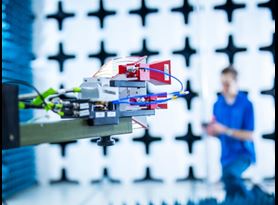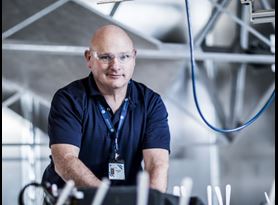FCC Radio Module Integration
Pre-approved modules are a great way for manufacturers to add to a product’s functionality without the time and expense of developing new RF components. However, it is not always clear when your module has sufficient certification to FCC requirements, and when additional compliance testing may be needed.
Our experts help you navigate radio module integration, from understanding product classifications to determining the requirements for compliance. In this guide, we explore 3 major factors influencing compliance: module types, additional product features, and basic module requirements.
Types of Radio Modules
For the purposes of radio module integration, the FCC has created four major module types: single-module transmitters, limited single-module transmitters, split-modular transmitters, and limited split modular transmitters. While each requires some form of certification, the module type impacts what type of additional testing may be needed.
Single-module transmitters are whole RF transmission devices that have proved compliance with applicable regulations independent of the host product (usually FCC Part 15.212 (a)).
Limited single-module transmitters are similar devices to regular single-module transmitters, but can only prove compliance in certain products or under certain conditions.
Split-modular transmitters are devices that comply with the same regulations of single-module transmitters; however, instead of being a single, complete product, they are split into a radio section and a control-element section.
Limited split-modular transmitters are similar to split-modular transmitters, but their compliance only applies in certain products or under certain conditions.
Effects of Other Product Features
It is important to remember that any product has its own set of compliance regulations which must be met before radio module integration. However, features, like RF receivers, Bluetooth or zigbee integration can change those requirements. In these cases, the product will often need to demonstrate additional compliance, both for those features and for the radio module.
Examples of this include products that contain both a transmitter and a receiver; products where the module is wired or built into other components; or cases where a product’s classification changes after integrating the module (i.e. changing to an intentional radiator classification).
Basic Requirements for Radio Module Integration
Because of the wide variety of modules and configurations available, there is no one set of requirements that fits every situation. However, FCC Part 15.212 provides some basic guidelines that apply to almost all radio module integrations.
Some of these regulations include:
- RF circuity must be shielded (any physical components or capacitors don’t need to be shielded, but they must be on the module assembly)
- The module must include buffered modulation or data inputs in order to comply with Part 15 requirements
- Modules must have their own power supply
- Antennas must be permanently connected to the module (or use a unique antenna connector), and the product must only be operated with approved antennas.
With so many different configurations available for a growing number of products, radio module integration can be a complicated part of your certification process. When you factor in a high risk of penalties for incorrect documentation, it’s critical to ensure that your radio products have the right certification, the first time.
Radio Module Integration Questions
Some key questions that manufacturers should consider include:
- Does the radio module have an FCC mark?
- Do you have a copy of the FCC certificate for the module?Are the standards listed and current?
- Do you have a copy of the test report(s)?
- Have you changes the module in a way that may affect compliance?
- Does the module have a host-mounted antenna?
- Are you using the module in the approved temperature range?
- Is the radion module co-located and capable of simultaneous transmission with another transmission?
- Is the equipment portable, body worn or used against the head?
Our highly-experienced experts can help guide you through every step of product certification. With years of experience in wireless testing, zigbee certifications, EMC testing and safety testing, we have the experience you need to ensure compliance while reducing time to market.
For more information, or to receive a quote, contact us today.
Find related Resources
Related Services

USA FCC Certification
Element TCB provides FCC certification services of your wireless devices for entry into the United States market.

Radio Testing
Element provides a wide range of wireless and radio testing services including RF testing for regulatory compliance, RF exposure and SAR assessments and OTA and Wireless Coexistence testing.

Advisory Services for Radio Products
Element provides guidance on the relevant regulatory requirements before you reach the testing and approvals stage, supporting you from start to finish - we ensure you achieve first time success.

Wireless Coexistence Testing
Our wireless coexistence testing programs evaluate how wireless medical devices and other sensitive equipment interact and perform with other electrical and radio equipment.
